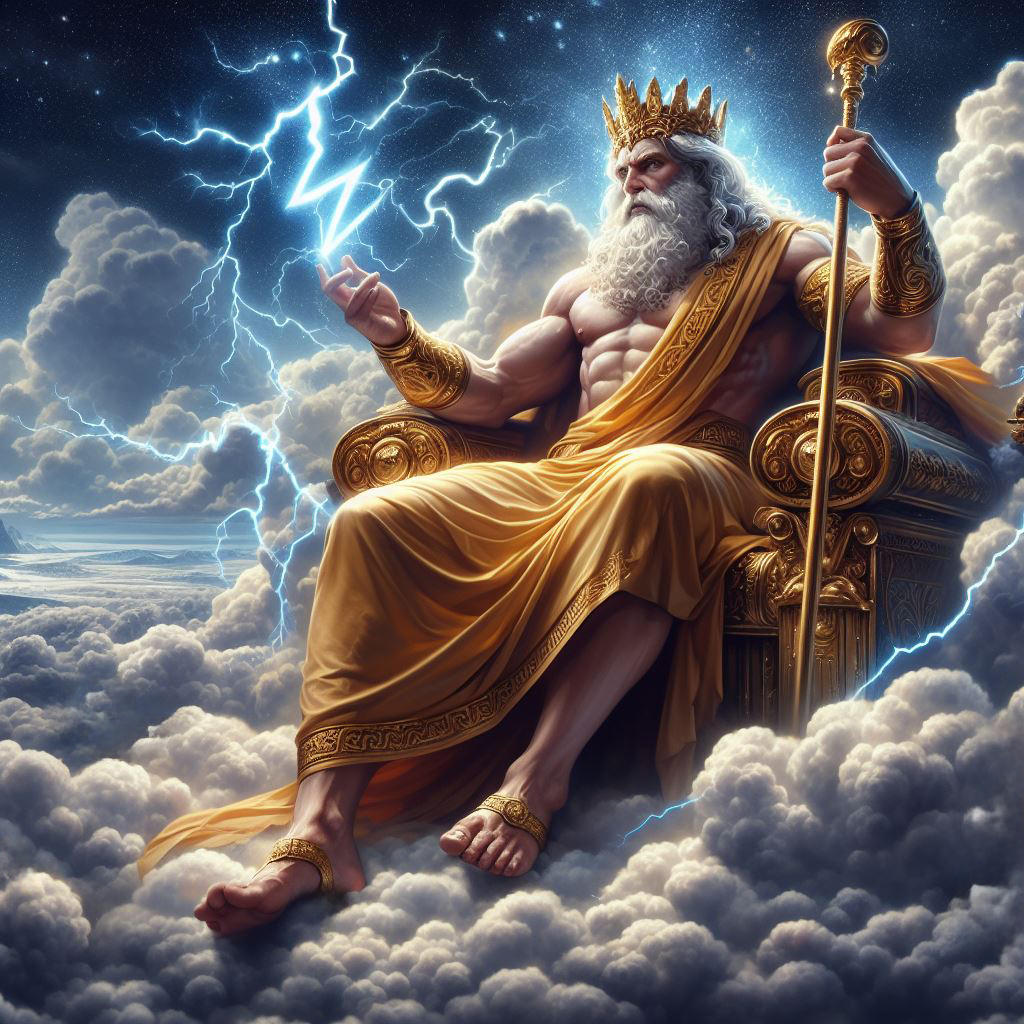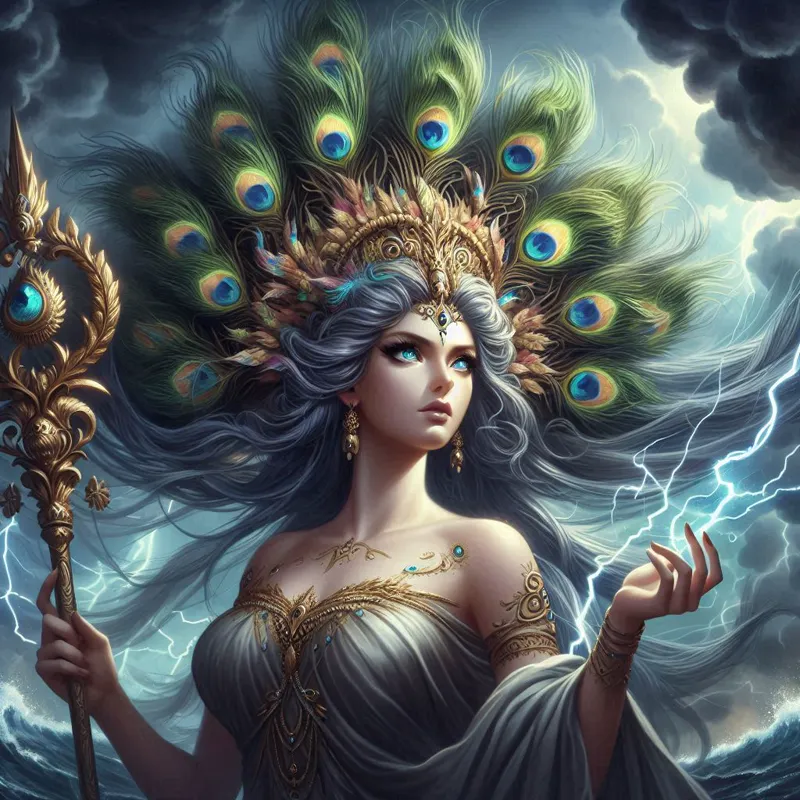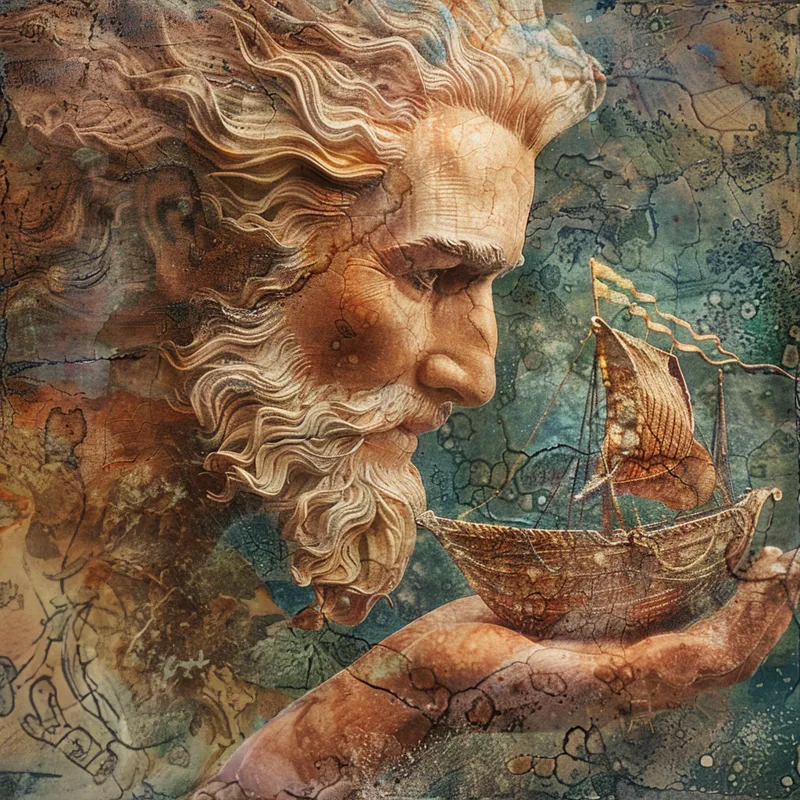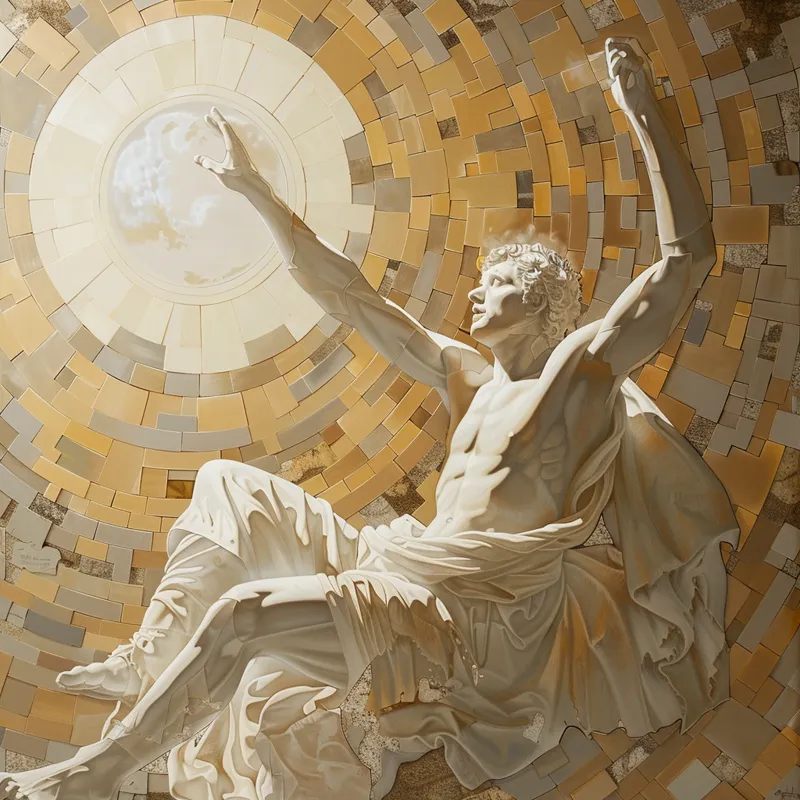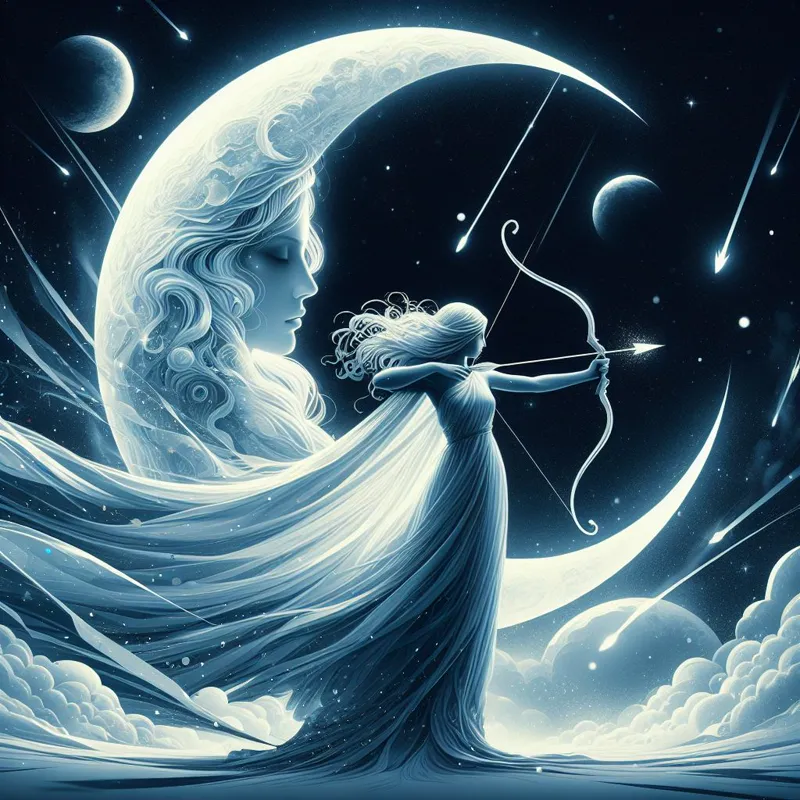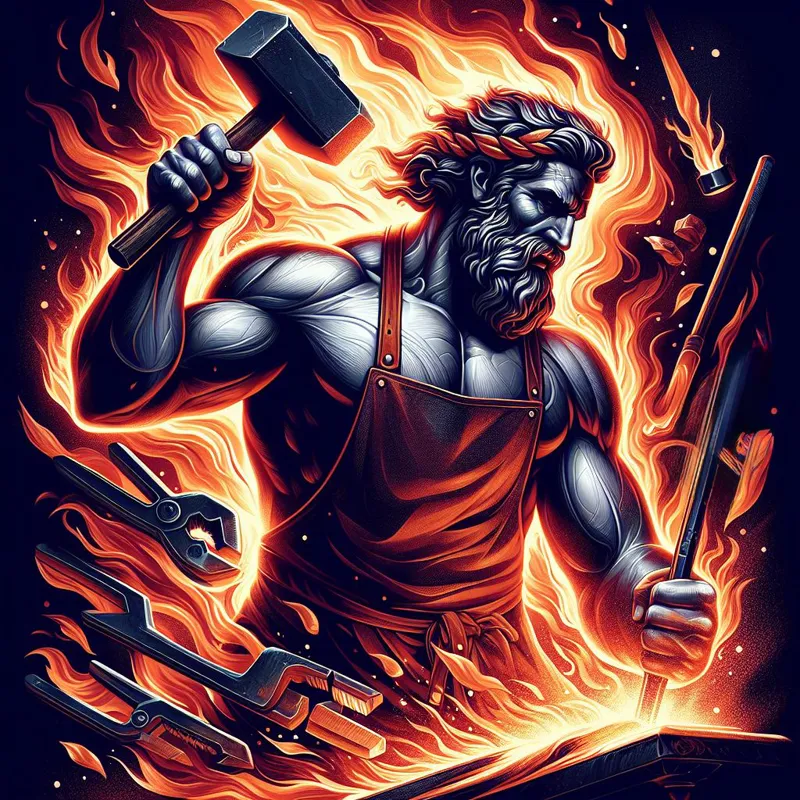
Mjolnir, weapon of the Thunder God
In the original Norse myths, Mjolnir is described as an extremely powerful and magical hammer created by the Dwarven brothers Sindri and Brokkr. Loki, the trickster god, cut off the hair of Sif, Thor's wife.
To appease Thor's anger, Loki promised to give Sif even more beautiful hair made of gold. He went to the dwarves Sindri and Brokkr, skilled blacksmiths, to fulfill his promise.
Loki's Mischief and Thor's Wrath

Loki is known as a shapeshifter
The mischievous god Loki, driven by his impulsive nature, once committed a reckless act that led to great consequences. He cut off the beautiful golden hair of Sif, the wife of Thor, causing immense distress to both Sif and the thunder god.
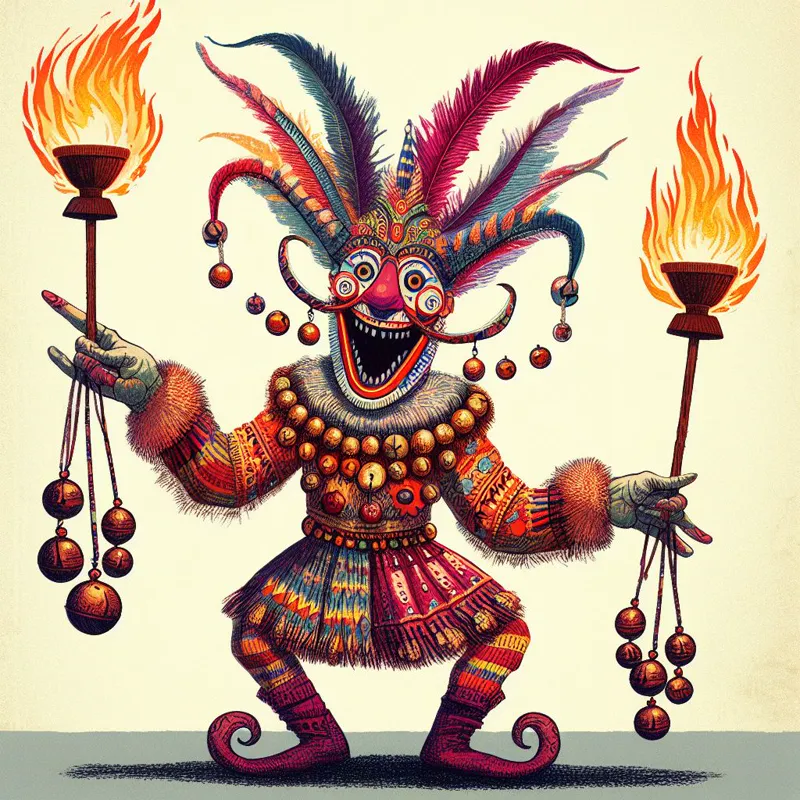
Loki is also known as a trickster
Thor, known for his fierce temper and protective nature, was consumed by anger upon discovering what Loki had done. His response was swift and furious, demanding retribution and justice for the harm caused to his wife.
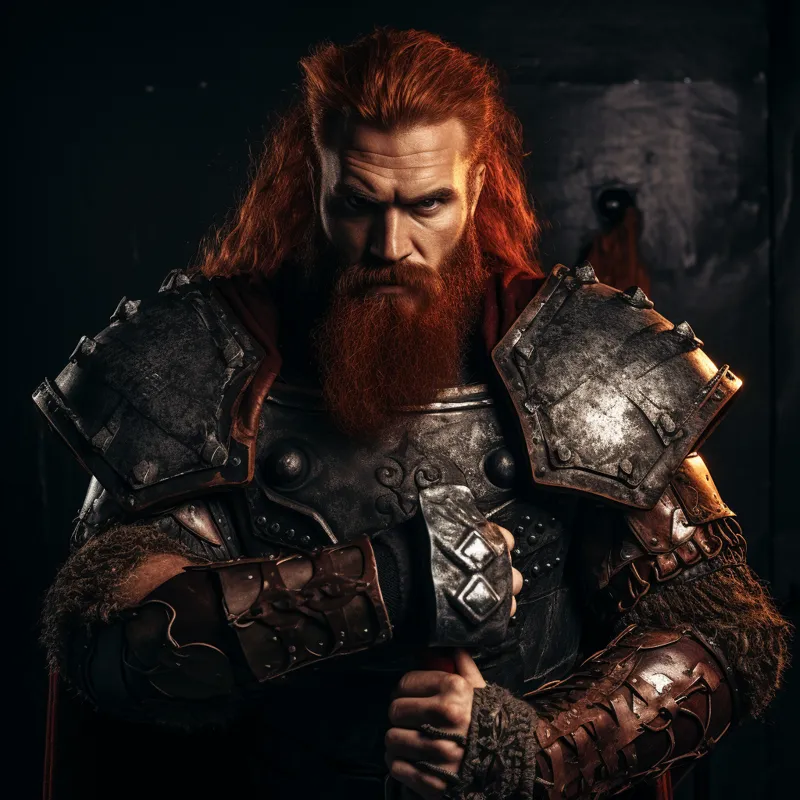
Thor, God of Thunder
This incident fueled Thor's determination to hold Loki accountable, setting the stage for a series of events where Loki, in his attempts to appease Thor, made promises and bargains that would lead to the creation of some of the most iconic artifacts in Norse mythology, including Sif's new golden hair and Thor's mighty hammer, Mjolnir.
The Dwarven Smiths
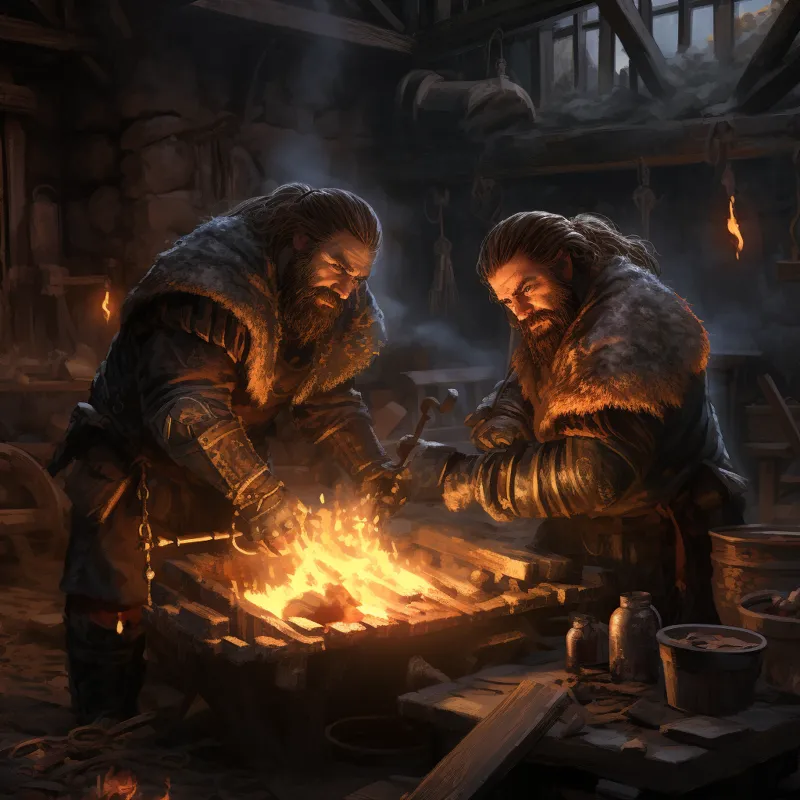
Sindri and Brokkr
In the heart of Svartalfheim, the realm of the dwarves, Sindri and Brokkr, masters of their craft, worked tirelessly in their blazing forge. Their creations were renowned across the realms, catching the attention of gods and mortals alike.

Hard at work creating Sif's new hair
Loki, the mischievous god, having played a prank that angered Thor greatly, sought to appease the thunder god. He promised Sif, Thor’s wife, hair spun from the finest gold.
Loki's Bet and the Creation of Mjolnir

Loki transforms into a fly
Loki, however, was not one to shy away from trouble. He made a wager, claiming that the sons of Ivaldi, another group of skilled dwarves, could craft items more magnificent than those of Sindri and Brokkr.
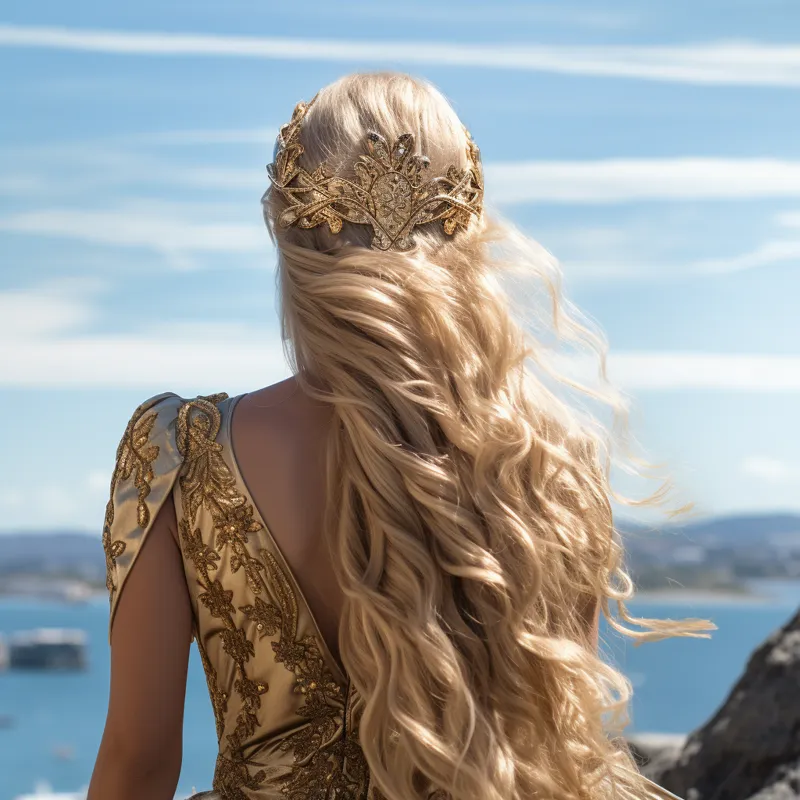
Sif's new hair was like pure gold
Determined to win, the brothers forged Sif's hair from pure gold, creating a masterpiece that glimmered in the light. They then crafted Skidbladnir, a ship that could sail on any sea and always find favorable winds.
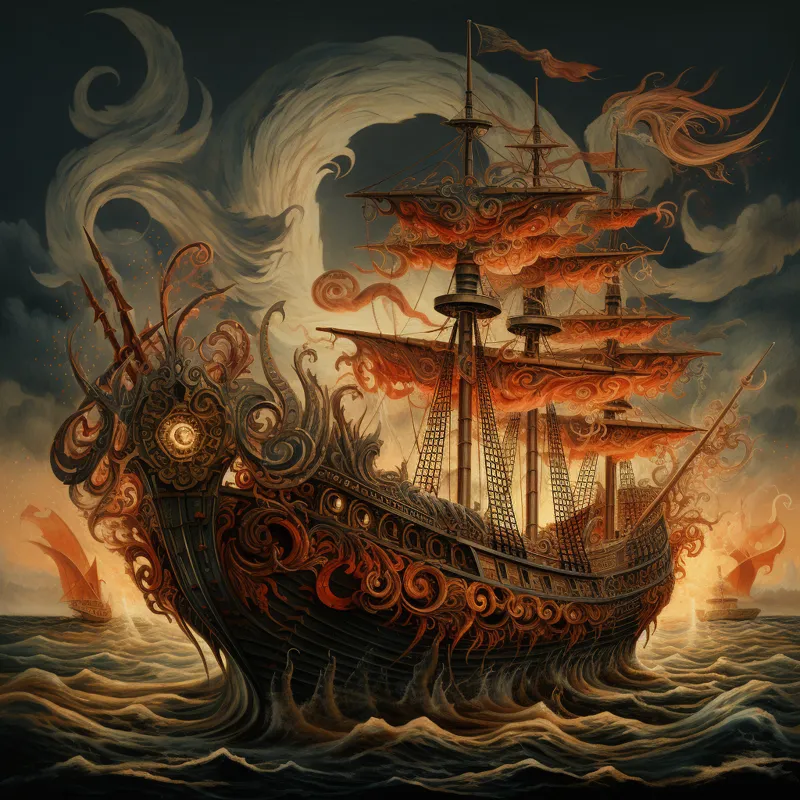
Skidbladnir, a ship that could sail on any sea
Finally, with great care, they began shaping Mjolnir, Thor's hammer. Yet, Loki, in the form of a pesky fly, bit Brokkr. Despite the pain, Brokkr held on, and Mjolnir's handle ended up shorter than intended, but its power was undiminished.
The Power of Mjolnir
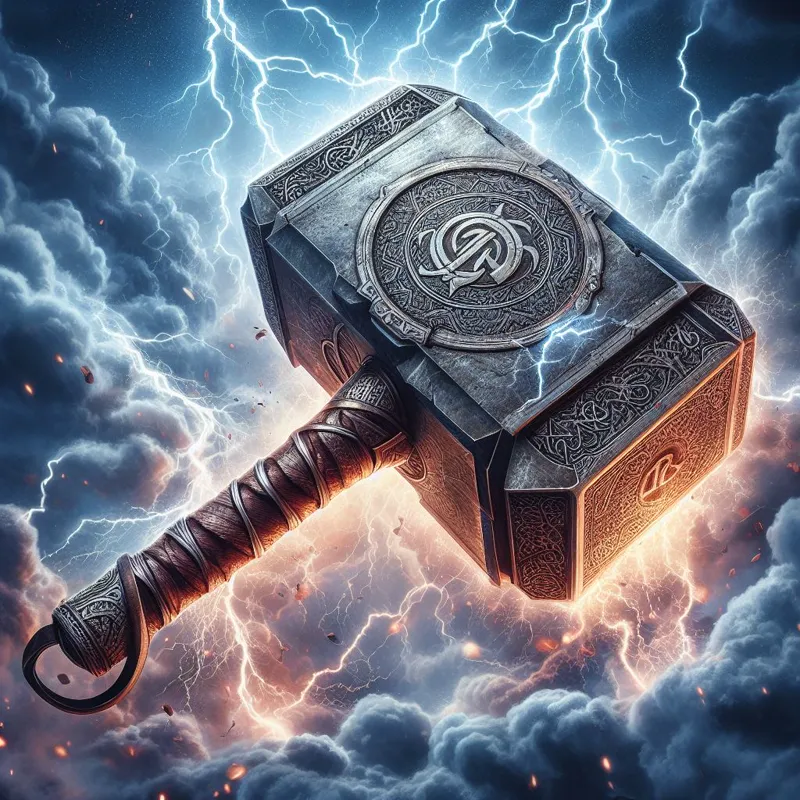
Mjolnir is flawed, but its power remains undiminished
When Mjolnir was completed, its essence resonated with the power of thunder and lightning. Thor, god of thunder, grasped the hammer's sturdy handle, feeling the weight of a thousand storms within.
With a swing, thunder roared across the realms, and lightning crackled at his command. Mjolnir was no ordinary weapon; it was a force of nature, a symbol of raw power and divine strength. Its strikes were unstoppable, and its echoes were heard in every corner of the cosmos.
The Worthy Wielder
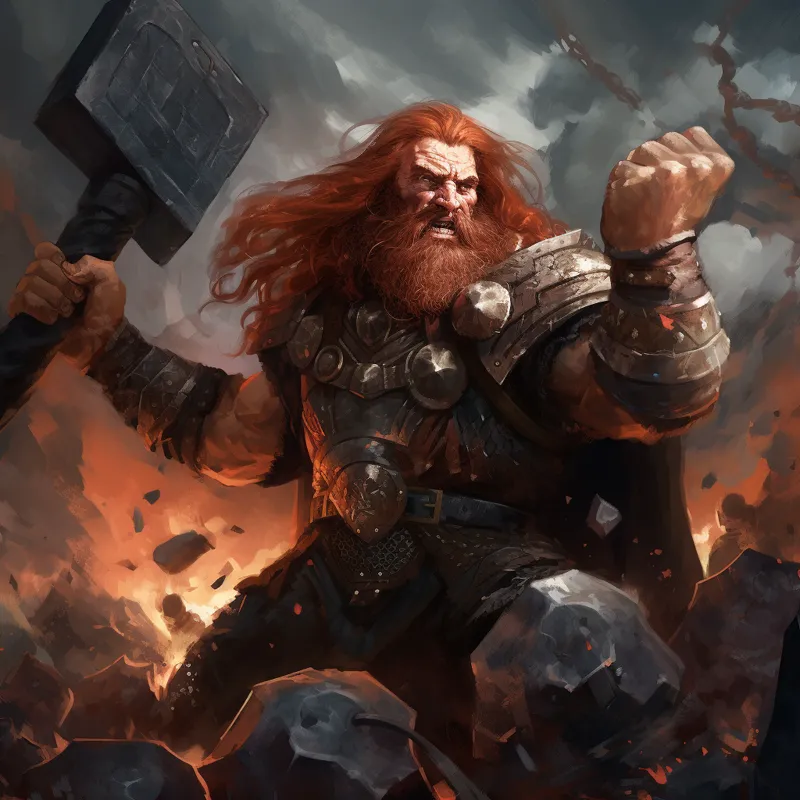
Thor wielding Mjolnir
Mjolnir was not just a tool of destruction; it was a judge of character. Its inscription held a powerful enchantment, ensuring that only the worthy could wield its might.
To be deemed worthy meant possessing a heart of courage, a spirit of justice, and an unwavering commitment to the greater good. Those who were found lacking in these virtues could not even lift the hammer, let alone command its devastating power. Mjolnir, in this sense, became a testament to the integrity of its chosen wielder.
Battles and Defense

Thor battles giants
Thor primarily used Mjolnir in battles against the forces of chaos, including giants and monsters. With a swing of his hammer, he could create devastating thunderstorms and launch lightning bolts, making him a formidable opponent. Thor's battles were not just displays of strength but demonstrations of his commitment to protecting the realms from evil.
Worthy Judgement
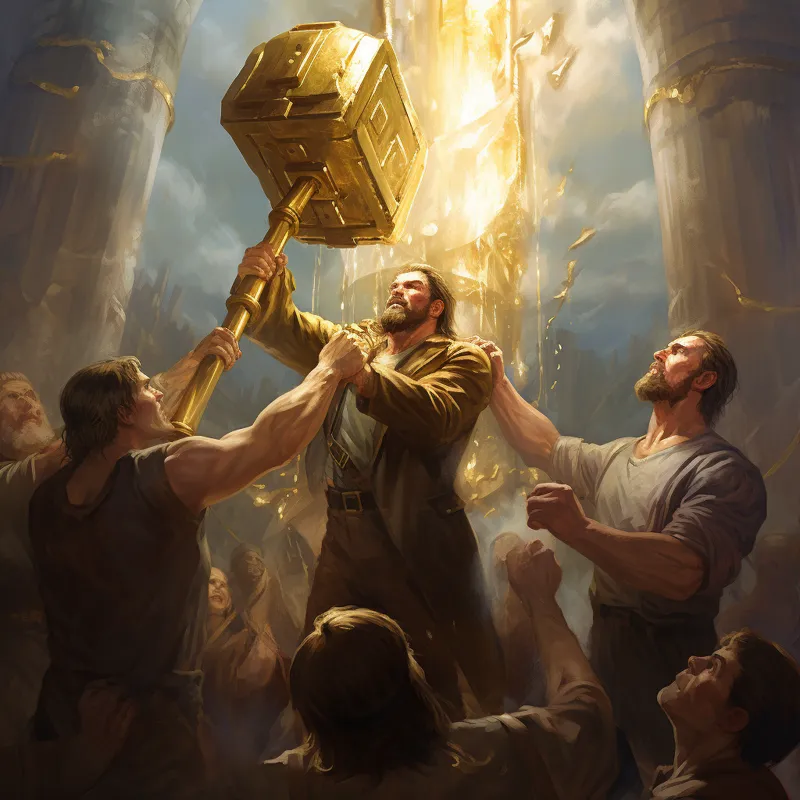
To be worthy
The test of worthiness was essentially a test of moral character. It evaluated not physical strength, but the strength of one's character. Those who were selfish, deceitful, or malicious couldn't lift Mjolnir.
This aspect of the enchantment reinforced the idea that true power should be wielded by those who embody virtues such as courage, honesty, humility, and compassion.
The Legacy of Mjolnir

Vikings deciding on a leader
The tale of Mjolnir’s creation and its adventures with Thor became an enduring legend. Across the ages, bards and storytellers sang of its power, weaving its story into the fabric of Norse mythology. The hammer's legacy transcended myth, inspiring generations with its symbolism.
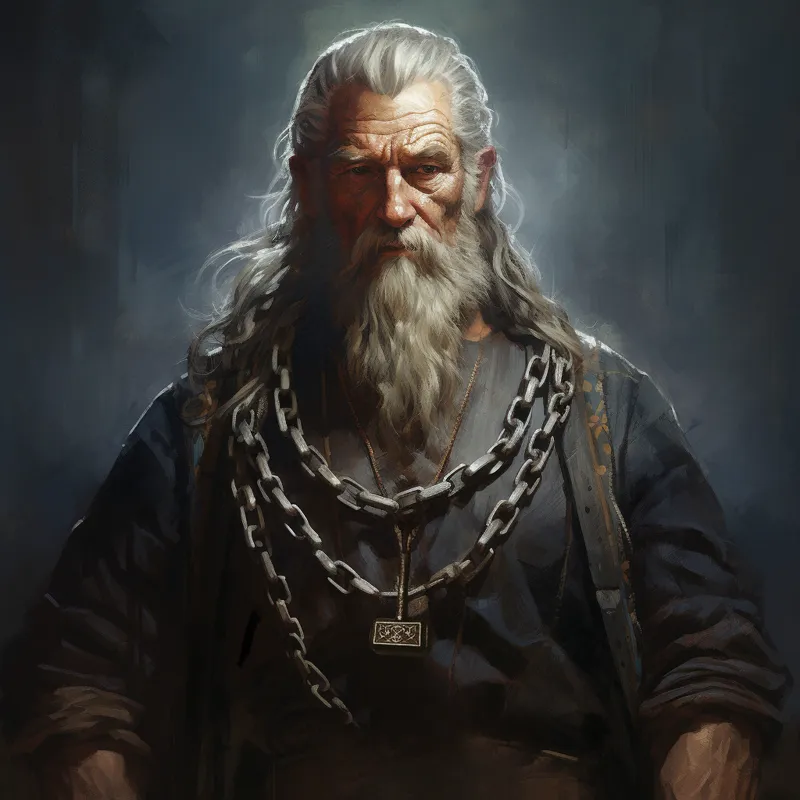
Wearing an amulet of Mjolnir
Mjolnir, beyond its physical might, carries profound symbolism in Norse mythology. It represents not just power, but the responsible use of power. Its enchantment - 'Whosoever holds this hammer, if he be worthy, shall possess the power of Thor' - underscores the importance of worthiness.

Gratitude and appreciation
This means that strength alone is not enough; it must be coupled with virtue and nobility. Mjolnir embodies the idea that power should be wielded responsibly, in the service of justice and the greater good.
In essence, Thor's use of Mjolnir was not just about defeating enemies. It was about upholding righteousness, protecting the innocent, and ensuring that power was wielded responsibly. Through his actions with Mjolnir, Thor embodied the qualities of a true hero in Norse mythology.


